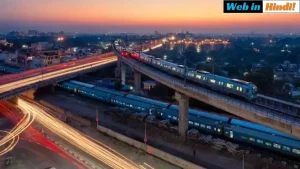
Education is the backbone of any modern society. It is an essential tool for empowering individuals and promoting sustainable development. In India, education has played a significant role in shaping the country’s growth and development. Today, India is one of the fastest-growing economies in the world, and much of its success can be attributed to its highly educated workforce.
The aim of this article is to highlight the top 20 educated states in India, showcasing their impressive educational infrastructure and remarkable educational achievements. We will also discuss the challenges faced by the Indian education system and explore the government initiatives being taken to promote education and literacy.
Key Takeaways
- Education is a vital tool for promoting sustainable development in India.
- The top 20 educated states in India have impressive educational infrastructure and remarkable achievements.
- Challenges such as access to education and gender disparity in literacy rates remain key issues in India’s education system.
- The Indian government is taking initiatives to promote education and literacy, including implementing innovative technology in education.
- Educated states in India contribute significantly to overall growth and progress in the country.
Understanding Literacy Rates in India
Literacy rates are one of the most important indicators of a state’s educational development. It is defined as the percentage of individuals aged 15 and above who can read and write their name and a simple sentence in any language. The literacy rate of a state can vary depending on several factors such as socio-economic status, cultural factors, and government initiatives.
According to the latest data, the state with the highest literacy rate in India is Kerala, with a rate of 96.2%. The other states with high literacy rates include Mizoram, Tripura, and Himachal Pradesh. However, it is important to note that literacy rates do not necessarily guarantee quality education, so a closer inspection is often required.
Some of the top-ranked states in education, including Kerala, Tamil Nadu, and Maharashtra have high-quality education and well-developed educational infrastructure. The states that have focussed more on quality have somewhat lower literacy rates but boast more robust education systems and facilities.
Measuring Literacy Rates
Literacy rates are measured by conducting a comprehensive survey across all states in India. The data is then analyzed, to determine the percentage of individuals who meet the predetermined criteria for literacy. The survey is conducted by the National Sample Survey Organization (NSSO) and is published on a regular basis.
Significance of Literacy Rates
A state’s literacy rate has a significant impact on its economic and social development. A higher literacy rate usually equates with a better quality of life, as literate individuals are more likely to be employed and increase earnings. Education also encourages civic participation and promotes social cohesion and mobility, further highlighting its importance in Indian society.
In conclusion, literacy rates remain central to assessing a state’s educational development and the level of progress that has been attained. While there are challenges, the various government schemes are aimed at increasing this rate and ensuring that education is accessible to all.
Top 5 Educated States in India
Education is one of the primary drivers of a nation’s progress, and several states in India have made significant strides in this regard. As of 2021, the top 5 educated states in India, based on the literacy rate, are Kerala, Delhi, Uttarakhand, Himachal Pradesh, and Rajasthan.
| Rank | State | Literacy Rate (%) |
|---|---|---|
| 1 | Kerala | 96.2 |
| 2 | Delhi | 89 |
| 3 | Uttarakhand | 87.6 |
| 4 | Himachal Pradesh | 86.6 |
| 5 | Rajasthan | 86.2 |
Kerala has consistently topped the list of educated states in India with its impressive literacy rate of 96.2%. Delhi, the national capital, follows closely with a literacy rate of 89%. Uttarakhand, Himachal Pradesh, and Rajasthan complete the top 5 with literacy rates of 87.6%, 86.6%, and 86.2%, respectively.
These states have achieved this distinction through robust educational infrastructure, focused policies, and innovative initiatives. Kerala’s success, for instance, can be attributed to its emphasis on primary education and the state’s unique education system that ensures access to education for all. The Delhi government’s flagship programs, such as the Chunauti scheme, have played a crucial role in improving the literacy rate in the national capital.
Moreover, these states have demonstrated their commitment to achieving sustainable and equitable education. For example, Himachal Pradesh has implemented programs to bridge the education gap between urban and rural areas while Rajasthan has launched campaigns to encourage girl child education.
The success of these states in the education sector is not only a matter of pride but also a roadmap for others to follow. Through sustained efforts and innovative strategies, other states in India can achieve their educational goals and contribute to the overall progress of the country.
Educated States Ranking 6-10
Following the top 5 educated states in India, here are the next five states ranked 6-10 in terms of education and literacy rates:
| Rank | State | Literacy Rate (%) | Education Initiatives |
|---|---|---|---|
| 6 | Kerala | 96.2 | Kerala has pioneered the use of technology in education, providing students with access to digital learning resources and online classes. The state also has a high-quality educational infrastructure, with a focus on vocational training programs. |
| 7 | Tamil Nadu | 80.3 | Tamil Nadu has implemented several education schemes to improve student outcomes, including free laptops and tablets for students in government schools. The state also has a strong network of colleges and universities. |
| 8 | Andhra Pradesh | 67.4 | Andhra Pradesh has made significant strides in expanding access to education, with a focus on providing education in rural areas. The state also provides free uniforms, textbooks, and midday meals to students. |
| 9 | Telangana | 66.5 | Telangana has implemented several educational reforms, including the introduction of English as a medium of instruction and the provision of digital classrooms. The state has also invested in vocational training programs. |
| 10 | Gujarat | 79.3 | Gujarat has a strong focus on quality education, with a wide range of technical institutes and vocational training programs. The state also provides free education to girls up to university level. |
These states have implemented various innovative initiatives to improve education access and outcomes. While there is room for improvement, their efforts have paid off with improved literacy rates and increased opportunities for their citizens.
States with Promising Education Trends
In the quest to create educated states in India 2021, several states have shown tremendous progress in the educational sector. These states have implemented various initiatives and programs to enhance educational outcomes and improve literacy rates. Here are some of the top states that have recorded considerable improvements, based on education statistics in Indian states:
| State | Literacy Rate | Remarks |
|---|---|---|
| Kerala | 96.2% | Kerala has been consistently performing well in the education sector and has the highest literacy rate in the country. The state has implemented various programs such as the ‘Athulyam’ scheme, providing education for migrant children, and ensuring the availability of textbooks and uniforms for all students. |
| Lakshadweep | 91.85% | Lakshadweep is a relatively small union territory with a high literacy rate, owing to the government’s focus on education in the region. |
| Goa | 88.70% | Goa’s literacy rates have been lauded as it is well above the national average. The state has implemented programs like the ‘Swin Swasth Sarvatra’ campaign, promoting digital literacy, and the ‘Sukanya’ scheme, empowering girls from underprivileged backgrounds. |
| Odisha | 72.9% | Odisha has shown significant progress in the last decade in the education sector, with a particular focus on enhancing female literacy rates. The state has several initiatives like the ‘Mo School’ campaign, improving the quality of education in public schools. |
| Himachal Pradesh | 83.8% | Himachal Pradesh has implemented several initiatives and policies aimed at enhancing education outcomes, such as the ‘Shiksha Saathi’ scheme. |
These states have exhibited considerable leadership in the education sector, making them some of the most educated states in India in 2021. With promising trends, these states have the potential to become trailblazers in the field of education and serve as models for others to emulate.
Challenges in the Education Sector
The education sector in India is facing several challenges that hinder its progress towards achieving universal and quality education. Despite making significant strides, a considerable percentage of the population lacks access to basic education, resulting in low literacy rates and educational attainment. Below are some of the significant challenges facing the education sector in India:
Access to Education
One of the most significant challenges facing the education sector in India is access to education, especially in rural areas. Many children drop out of school due to financial constraints or due to the need to support their families. According to education statistics in Indian states, states such as Bihar, Assam, and Rajasthan have the lowest literacy rates due to limited access to education.
Quality of Education
Another significant challenge facing the education sector in India is the quality of education. While several schools and institutions exist, the quality of education provided is subpar, leading to low educational outcomes and poor educational progress. Therefore, improving the quality of education remains a key focus to improve literacy rates and educational attainment levels in India.
Gender Disparity in Literacy Rates
There is also a considerable gender disparity in literacy rates in India, with girls lagging behind boys in educational attainment levels. According to education statistics in Indian states, states such as Bihar, Rajasthan, and Uttar Pradesh exhibit some of the largest discrepancies between male and female literacy rates.
Overall, addressing these challenges is key to improving the education sector’s progress in India. The government and other stakeholders must implement strategic initiatives to improve access to education, ensure high-quality education, and bridge the gender gap in educational attainment levels.
Government Initiatives for Education
The government of India has implemented several initiatives to promote education in the country. These initiatives have helped to improve literacy rates and enhance educational infrastructure in many states. The following are some of the notable programs and schemes:
Sarva Shiksha Abhiyan (SSA)
The SSA is a flagship program aimed at providing universal elementary education to children between the ages of 6 and 14. It was launched in 2001 and has since been implemented in all states and union territories. The program has helped to increase enrollment rates and reduce dropouts in primary schools across the country.
Rashtriya Madhyamik Shiksha Abhiyan (RMSA)
The RMSA is a centrally sponsored scheme aimed at providing secondary education to all children in the age group of 14-18 years. The program focuses on improving the quality of education and enhancing access to secondary schools in rural and remote areas.
Beti Bachao, Beti Padhao (BBBP)
The BBBP program was launched in 2015 to address the issue of gender disparity in education. The program aims to promote the education of girls and improve their status in society. It focuses on enhancing access to education, improving the quality of education, and empowering girls through education.
Padhe Bharat Badhe Bharat
The Padhe Bharat Badhe Bharat program was launched in 2014 to promote foundational literacy and numeracy among children in primary schools. The program focuses on improving the quality of teaching and learning in the early years of schooling.
Digital India
The Digital India program was launched in 2015 to transform India into a digitally empowered society and knowledge economy. The program has a strong focus on education and aims to provide digital infrastructure and resources to enhance learning outcomes.
Mid-Day Meal Scheme
The Mid-Day Meal Scheme is a program that provides free meals to school children across the country. The program has helped to improve attendance rates and reduce malnutrition among children in primary schools.
The government initiatives and schemes implemented in India have played a significant role in improving the education sector in the country. They have helped to promote access to education, improve the quality of education, and reduce gender and socioeconomic disparities in education. Through these programs and schemes, the government continues to strive towards making education accessible to all in the country.
Role of Technology in Education
The integration of technology has played a pivotal role in the education sector, transforming the way students learn and educators teach. In modern times, technology has opened up new possibilities and opportunities for students, allowing them to access information and resources beyond the traditional classroom. This has led to many states in India embracing technology to enhance learning outcomes and improve overall education quality.
According to education statistics in Indian states, a large portion of students in educated states in India 2021 have access to digital tools such as computer labs, projectors, and smart whiteboards. This provides more interactive learning experiences and helps students develop their critical thinking and problem-solving skills. Teachers, too, have benefitted from incorporating technology in their teaching methods as it can provide real-time feedback and analysis.
One promising example is the state of Kerala, known for its remarkable educational infrastructure and widespread internet connectivity. The state has been a strong proponent of embracing technology to improve education outcomes.
“The Covid-19 pandemic has accelerated technology adoption in the education sector and created a new normal in online learning. We are witnessing how technology is helping students and teachers to connect and learn from anywhere in the world. With the ongoing development of innovative education technology, we can expect to see many exciting new advancements in the future,” said Vijay, an education expert from Kerala.
It is clear that technology is a catalyst for growth and innovation in the education sector. It is essential to continue exploring new and innovative ways to integrate technology into the classroom, ensuring students are prepared for the challenges of tomorrow.
Education Disparities Among States
Despite India’s progress in the education sector, there are still significant disparities in literacy rates across different states in the country. According to education statistics in Indian states, some states have much higher literacy rates than others.
Reasons for Disparities
The reasons behind these disparities are complex and multifaceted. Factors such as poverty, lack of infrastructure, and cultural norms can all contribute to lower literacy rates in certain states. Gender disparity is also a significant issue, with female literacy rates often lagging behind male rates.
Efforts to Bridge the Gap
Efforts are underway to address these disparities. The government has implemented various initiatives and policies aimed at improving access to education and raising literacy rates in low-performing states. NGOs and private organizations have also taken on this challenge by focusing on improving education in underserved communities.
| State | Literacy Rate |
|---|---|
| Kerala | 96.2% |
| Lakshadweep | 91.8% |
| Mizoram | 91.3% |
| Tripura | 87.2% |
| Goa | 87% |
| Bihar | 61.8% |
| Jharkhand | 66% |
| Rajasthan | 67.1% |
| Andhra Pradesh | 67.4% |
| Telangana | 66.5% |
As shown in the table above, there is a significant disparity in literacy rates across different states. While states like Kerala and Lakshadweep have achieved high literacy rates, states like Bihar and Jharkhand continue to struggle with low literacy rates.
It is essential for India to bridge the gap in education disparities to ensure access to quality education for all citizens, regardless of their location or socio-economic status. By addressing these disparities and implementing effective educational initiatives, India can continue to progress towards a brighter future for its citizens.
Sustainable Education Models
While education is vital, it is equally important to ensure that the models adopted for imparting knowledge are sustainable. Some states in India have taken an innovative approach towards education, and the results have been remarkable. For instance, the Himachal Pradesh government has set up ‘smart classrooms’ in government schools to provide digital learning tools. These classrooms come equipped with interactive whiteboards and projectors, making learning more engaging and interactive for students.
The Kerala government has rolled out an ambitious education program called ‘Sampoorna.’ The program aims to provide free laptops/tablets and study materials to every school-going student in a phased manner. Additionally, it has set up the ‘Saksharata Mission’ to impart digital and financial literacy training to five million households in the state. This program has helped bridge the gap between the urban and rural divide, providing equal opportunities to all.
| State | Sustainable Education Model |
|---|---|
| Punjab | The state government has launched the ‘Padho Punjab, Padhao Punjab’ initiative to provide free textbooks and uniforms to school students up to Class X. Additionally, they have set up ‘EduSat’ – an educational satellite being used for interactive distance learning. |
| Madhya Pradesh | The state government has launched ‘Prerna’ to improve the education status of girl students. This initiative provides bicycles to girl students, incentivizing them to attend school and reduce the dropout rate. Additionally, it has set up ‘Buniyad’ – a program that helps provide basic education to out-of-school children. |
| Tamil Nadu | The state government has implemented a comprehensive system for monitoring schools and ensuring quality education. It has set up the ‘Samagra Shiksha’ program, which provides separate attention to each child and helps them learn at their own pace. |
These sustainable education models provide valuable insights into how education can be imparted in a way that is both effective and efficient. They serve as examples for other states to follow and a testament to how education can be a game-changer for sustainable development in India.
Future Outlook for Education in India
The future of education in India looks promising, with several states implementing innovative initiatives to enhance the quality of education. However, there are still significant challenges that need to be addressed, such as improving the infrastructure and access to education in rural areas.
One promising trend is the increasing use of technology in the education sector. States like Maharashtra and Karnataka have started using online platforms to deliver educational content, and others are likely to follow suit. This will not only enhance the learning experience but also make education more accessible to students across the country.
Another area of focus is vocational education. States like Gujarat have implemented vocational programs in schools to provide students with the necessary skills relevant to their future careers. This is a great way to prepare students for the job market and contribute to the economic growth of the country.
However, there are also challenges that must be addressed. For instance, gender disparity in literacy rates remains a significant concern. Several states are still struggling to provide education to girls and women, particularly in rural areas. Efforts must be made to ensure that every child, regardless of gender, has access to education.
Impact of Education on Socioeconomic Development
Education plays a vital role in the socio-economic development of a nation and its people. In India, educated states have contributed significantly to the overall growth and progress of the country. Literacy rates and education statistics in Indian States have proven that education is a critical factor in improving the quality of life of people.
A well-educated population can improve economic development as educated individuals have a better understanding of financial planning and investment. It also leads to increased productivity and innovation, which can catalyze economic growth. Educated individuals are more likely to be employed and have a higher earning potential, resulting in reduced poverty rates and financial stability. Studies have shown that a 1% increase in literacy rates can lead to a 2.5% rise in GDP.
Educated states in India have also demonstrated a positive impact on social development. Education can empower people to participate in political processes and enhance their ability to make informed decisions. It enables individuals to challenge age-old social norms and traditions, leading to a more egalitarian society. Education also plays a critical role in promoting gender equality and reducing social disparities.
It is evident that education is a powerful tool that can enhance the socio-economic development of a country. The government and educational institutions in India must continue to prioritize improving education statistics in Indian states and promoting education initiatives to drive socio-economic development and achieve sustainable growth.
Conclusion
India has come a long way in its pursuit of educational excellence. As we have seen, there are several states in the country that have achieved remarkable success in this regard. Through their innovative initiatives and sustained efforts, these states have become the most educated states in India.
As we move forward, it is crucial to continue this momentum and strive towards achieving even higher levels of education. Through the implementation of robust policies and initiatives, we can work towards making education more accessible and equitable for all.
By investing in education, India can derive immense benefits in terms of socioeconomic progress and development. Educated states in India 2021 are at the forefront of this progress, and they serve as an inspiration for us all.
Therefore, in conclusion, it is essential to recognize the crucial role that education plays in India’s growth story. As we strive towards becoming a global superpower, we must continue to prioritize education and work towards becoming one of the most educated countries in the world.
Let us celebrate the achievements of India’s most educated states and draw inspiration from their success. Together, we can create a bright future for our country, built on the foundations of education and knowledge.
Thank you for joining me on this journey to explore India’s education landscape.
FAQ
What are the top 20 educated states in India?
The top 20 educated states in India are determined based on their literacy rates and overall educational initiatives. Some of the states that consistently rank high in terms of education include Kerala, Delhi, Goa, Chandigarh, and Punjab, among others.
How are literacy rates measured in India?
Literacy rates in India are measured through the Census conducted by the government. The census collects data on the number of literate individuals above the age of seven and determines the literacy rate as a percentage of the population.
Which state has the highest literacy rate in India?
As per recent data, Kerala has the highest literacy rate in India. It is known for its robust education system and high emphasis on literacy. The state has consistently topped the charts in terms of literacy rates.
What are the top-ranked states in education in India?
The top-ranked states in education in India include Kerala, Delhi, Goa, Chandigarh, and Punjab. These states have made significant strides in the education sector and have achieved high literacy rates.
Which are the most educated states in India in 2021?
In 2021, the most educated states in India include Kerala, Delhi, Goa, Chandigarh, and Punjab. These states have demonstrated a strong commitment to education and have implemented successful initiatives to improve literacy rates.
Which states have the highest literacy rates?
States like Kerala, Delhi, Goa, Chandigarh, and Punjab have consistently recorded the highest literacy rates in India. These states prioritize education and have invested in quality educational infrastructure.
What are the educational statistics of Indian states?
Educational statistics vary across Indian states. However, states like Kerala, Delhi, Goa, Chandigarh, and Punjab boast impressive literacy rates and have implemented effective educational initiatives.
What are the challenges faced by the education sector in India?
The education sector in India faces several challenges, including issues of accessibility, quality of education, and gender disparity in literacy rates. Efforts are being made to address these challenges and improve the overall education system.
What government initiatives exist to promote education in India?
The Indian government has implemented various initiatives to promote education. Some of these include the Sarva Shiksha Abhiyan (SSA), Rashtriya Madhyamik Shiksha Abhiyan (RMSA), and the National Literacy Mission (NLM) to improve access to education and enhance literacy rates.
How does technology contribute to the education sector in India?
Technology plays a significant role in the education sector in India. States have embraced technological advancements to enhance learning outcomes through initiatives like online education platforms, digitized classrooms, and e-learning programs.
What are the disparities in education among states in India?
Education disparities exist among different states in India. Factors such as infrastructure, resources, and socio-economic conditions contribute to these disparities. Efforts are being made to bridge the gap and ensure equal educational opportunities for all.
What sustainable education models have been adopted by Indian states?
Indian states have adopted various sustainable education models to improve literacy rates and educational outcomes. Some of these models focus on community involvement, skill development, and innovative pedagogical approaches.
What is the future outlook for education in India?
The future of education in India holds both challenges and opportunities. Efforts are being made to improve access to quality education, enhance teacher training, and incorporate technology-driven approaches to ensure holistic development and inclusive education.
How does education impact socioeconomic development in India?
Education plays a crucial role in socioeconomic development in India. Educated states contribute significantly to economic growth, reduce poverty rates, and enhance overall human development. Education is viewed as a catalyst for social change and progress.
More:- Click Here








3 thoughts on “Top 20 Educated State in India”